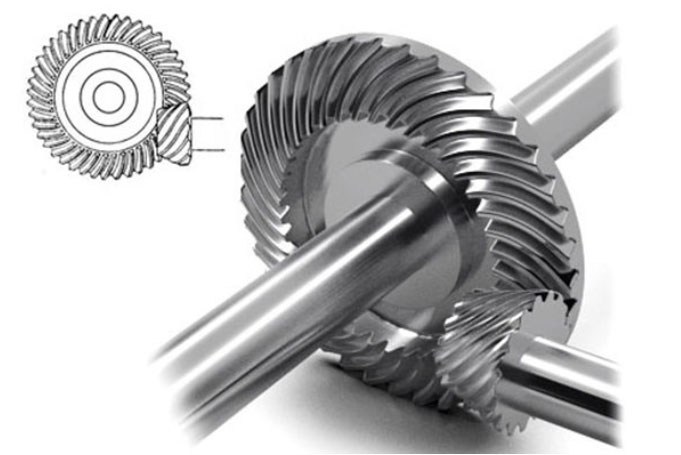Noise reduction is an important consideration in the design and operation of hypoid gears, as they can generate noise due to their complex tooth profiles and offset shaft alignment. Excessive noise can affect the comfort of machinery operators, increase wear and tear on gear components, and potentially indicate performance issues. To mitigate noise in hypoid gears, several techniques and strategies can be employed. Here are some commonly used noise reduction techniques for hypoid gears:

- Tooth Profile Optimization: The tooth profile of hypoid gears can be optimized to minimize noise generation. By carefully designing the tooth geometry, including tooth shape, helix angle, and tooth contact pattern, it is possible to achieve smoother gear meshing, reduce vibration, and lower noise levels. Computer-aided design (CAD) software and simulation tools can aid in optimizing tooth profiles.
- Gear Quality and Surface Finish: High-quality manufacturing processes, such as precise gear cutting, grinding, and honing, contribute to smoother tooth surfaces. Improving the gear quality and surface finish reduces friction and noise during gear operation.
- Lubrication and Fluid Films: Proper lubrication is crucial for reducing noise and ensuring smooth gear operation. High-quality lubricants with appropriate viscosity and additives should be used. The lubricant forms a fluid film between gear surfaces, reducing friction, damping vibrations, and minimizing noise.
- Noise-Damping Materials and Coatings: The use of noise-damping materials or coatings on gear surfaces can help reduce noise generation. These materials absorb vibrations, dampen resonance, and reduce the overall noise level. Examples include rubber or elastomer coatings applied to gear teeth or the use of noise-damping composite materials.
- Load Distribution and Contact Pattern Optimization: Achieving proper load distribution and optimizing the tooth contact pattern are important for noise reduction. By adjusting the offset shaft alignment, gear backlash, and contact pattern, the load distribution can be optimized, reducing localized stresses, vibrations, and noise.
- Vibration and Resonance Analysis: Analyzing the gear system’s natural frequencies and resonance behavior can identify potential sources of noise and vibration. Finite element analysis (FEA) and modal analysis techniques can be used to study the gear system’s dynamics and make design adjustments to minimize resonances that contribute to noise.
- Structural Design and Stiffness: The structural design of the gearbox housing and supporting structures can impact noise transmission. Stiffer and well-damped structures can help minimize the transmission of vibrations and noise to the surrounding environment.
- Gearbox Enclosure and Isolation: Using soundproof enclosures or isolating the gearbox from the surrounding equipment can help contain and reduce noise transmission. Enclosures made of sound-absorbing materials can minimize noise propagation, providing a quieter operating environment.
- Gear Maintenance and Inspections: Regular gear maintenance, including proper lubrication, gear alignment checks, and inspections for wear or damage, is essential for noise reduction. Timely detection and resolution of any issues can prevent excessive noise generation and ensure the gears perform optimally.
By employing these noise reduction techniques, manufacturers and designers can effectively mitigate noise issues associated with hypoid gears, creating quieter and more comfortable operating environments. It is important to consider the specific application requirements, gear design, and system dynamics to implement the most appropriate noise reduction strategies for hypoid gears.
